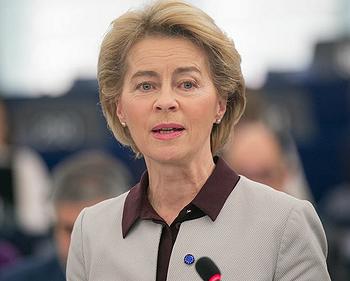
BRUSSELS, Belgium, March 10, 2020 (ENS) – The European Commission has proposed to pass a law formalizing the EU’s political commitment to be climate neutral by 2050 to protect the planet and its inhabitants. The European Climate Law sets the 2050 target and direction for all EU policy and offers predictability to public authorities, businesses, and citizens.
At the same time, the Commission is launching a public consultation on the future European Climate Pact. Through this consultation, the public will be involved in co-designing the pact.

President Ursula von der Leyen of Germany said, “We are acting today to make the EU the world’s first climate-neutral continent by 2050. The Climate Law is the legal translation of our political commitment and sets us irreversibly on the path to a more sustainable future. It is the heart of the European Green Deal. It offers predictability and transparency for European industry and investors. And it gives direction to our green growth strategy and guarantees that the transition will be gradual and fair.”
With the European Climate Law, the Commission proposes a legally binding target of net zero greenhouse gas emissions by 2050. The EU institutions and the 27 Member States are collectively bound to take the necessary measures at the EU and national levels to meet the target.
The Climate Law includes measures to keep track of progress and adjust human actions accordingly, based on existing systems such as the governance process for Member States’ National Energy and Climate Plans, regular reports by the European Environment Agency, and the latest scientific evidence on climate change and its impacts. Progress will be reviewed every five years in line with the global stocktaking exercise under the Paris Agreement.
The Climate Law also addresses the pathway to get to the 2050 target:
* – Based on a comprehensive impact assessment, the Commission will propose a new 2030 EU target for greenhouse gas emission reductions. The Climate Law will be amended once the impact assessment is completed.
* – By June 2021, the Commission will review, and where necessary propose to revise, all relevant policy instruments to achieve the additional emission reductions for 2030.
* – The Commission proposes the setting of a 2030-2050 EU-wide trajectory for greenhouse gas emission reductions, to measure progress and give predictability to public authorities, businesses and citizens.

* – By September 2023, and every five years thereafter, the Commission will assess the consistency of EU and national measures with the climate-neutrality objective and the 2030-2050 trajectory.
* – The Commission will be empowered to issue recommendations to the Member States whose actions are inconsistent with the climate-neutrality objective, and the Member States will be obliged to take account of these recommendations or to explain their reasoning if they fail to do so. The Commission can also review the adequacy of the trajectory and the Union wide measures.
Member States will also be required to develop and implement adaptation strategies to strengthen resilience and reduce vulnerability to the effects of climate change.
Alongside government policies and regulation, all sectors of society and economy have a part to play in the transition to a climate-neutral European Union.
So, the Commission has launched a public consultation on a new European Climate Pact, a broad initiative to give citizens and stakeholders a voice and role in designing new climate actions, sharing information, launching grassroots activities and showcasing solutions that others can follow.
The public consultation will be open for 12 weeks. The inputs will be used to shape the Climate Pact, which will be launched before the United Nations Climate Change Conference taking place in Glasgow in November 2020 (COP26).
Meanwhile, European mayors will gather in Parliament on Wednesday, March 11 to discuss climate-neutral cities and cities’ achievements and ambitions in the context of the European Green Deal.
European Parliament President David Sassoli will open the 2020 Covenant of Mayors ceremony in the Parliament building, and at Executive Vice-President of the Commission Frans Timmermans will hold a Citizen’s Dialogue with participants on the Climate Pact.
The purpose of the event is to exchange views on how different cities and towns are dealing with climate change and how to scale up their efforts.
The Covenant of Mayors is a European initiative launched in 2008 that connects more than 10,000 towns and cities, in Europe and beyond, that are committed to reducing CO2 emissions and increasing their resilience to climate change.
On March 6 the Commission officially started work with the publication of the inception impact assessments on the future Carbon Border Adjustment Mechanism and the review of the Energy Taxation Directive, two of the other important policy instruments under the European Green Deal. In addition, the College of Commissioners adopted a proposal to designate 2021 as the European Year of Rail to highlight the benefits for the climate of increasing passenger and freight use of the rail network.
The EU’s ambition to become the first climate-neutral bloc in the world by 2050 is at the heart of the European Green Deal presented by the von der Leyen Commission on December 11, 2019.
The European Commission first set out its vision for a climate-neutral EU by 2050 in November 2018, in line with the Paris Agreement objective to keep the global temperature increase to well below 2°C and pursue efforts to keep it to 1.5°C.
The European Parliament endorsed the EU objective of achieving net zero greenhouse gases on March 14, 2019. On December 12, 2019, the European Council endorsed the objective of a climate neutral European Union by 2050.
Copyright Environment News Service (ENS) 2020. All rights reserved.
© 2020, Environment News Service. All rights reserved. Content may be quoted only with proper attribution and a direct link to the original article. Full reproduction is prohibited.
